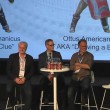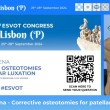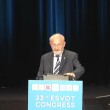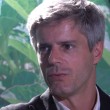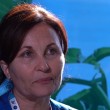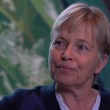Katja Voss, Dr. med. vet. Diplomate ECVS (Small Animals)
University Veterinary Teaching Hospital
University of Sydney
65 Parramatta Road
Camperdown 2006 NSW - Australia
G.S-S. What was behind your a decision to want become a veterinarian?
K.V Animals have always fascinated me. They were an irresistible attraction for me already as a kid, probably often to the nuisance of my parents who were not as keen on them as I was. In addition to the passion for animals, I was also interested in biology and medicine, so I guess becoming a veterinarian was just a logical thing to do and I have never really considered any other profession. No need to mention that I read all the James Herriot stories and imagined that this was what I would be doing once I would become a vet. Obviously, it worked out differently. What I enjoy about the University work environment is the diversity of work, challenges and duties, that you can combine clinical work with research and teaching. Also important to me is working in a team. The decision to specialize in surgery grew slowly over the first years in practice, by realizing that I like to work with my hands and like to see some immediate effect of what I am doing, which one is more likely to get in surgery than in other fields of veterinary medicine.
G.S-S. Did any particular individual take a special interest in your training or influence you as a mentor?
K.V. The person who influenced my career most was certainly my supervisor during the surgery residency, Pierre Montavon. After being in private practice for nearly four years I went back to the University of Zurich where I had studied, to start an internship and then the residency in small animal surgery. Pierre was a very engaged supervisor who always tried to get the best out of everyone. This was often hard work for us residents but also very rewarding. Something that also contributed to my professional and I guess also personal development was the outstanding team spirit I experienced during my time at the University of Zurich. Many former work colleagues are still close friends, even if we do not get to see each other much since I moved to the other side of the world. I continued working at the Small Animal Clinic in Zurich for approximately four years after sitting the ECVS examinations and also during this time Pierre shared his ideas and gave me full support. All together I spent 10 years at the Small Animal Clinic in Zurich. I really enjoyed working there so it was a big step for me to move to Sydney. Saying that, it was a good thing to do, and here in Sydney I gather different experiences and continue to learn from my new colleges here.
G.S-S. Is there a particular area of orthopaedics that is of special interest to you?
K.V. My main clinical interests are orthopaedic trauma in general and diseases of the stifle joint. Orthopaedics in cats I find specifically fascinating and I also like the miniaturization of implants necessary to repair fractures in both cats and small breed dogs. I also have a strong interest in canine gait analysis which was the research area for my Habilitation thesis at the University of Zurich. Currently we unfortunately don’t have access to a force plate or pressure mat here in Sydney, but hopefully this will change in the future.
G.S-S. I know that you are now working in the clinic in Sydney, which is becoming very busy. Nevertheless, do you have time for a research project, and if so please tell readers about it; if not, is there something that you would like to work upon when time and funds allow you to do so?
K.V. The main focus over the past 3 years was to help building up the case load and the clinic here at the University Veterinary Teaching Hospital in Sydney. Nevertheless I have started a few smaller clinical or cadaver studies on TTA and patella luxation in the form of honours student projects or Resident projects. These areas will be the focus of research during the next year or so. Enhancing bone healing in cats is another research topic I would like to follow up on once there is a bit of time to consolidate ideas and search for funding.
G. S-S. Have you found a special technique or procedure which has not been described before and if so, please share it with readers?
K.V. I wish I could say I have developed a new surgical procedure, but unfortunately I haven’t. I guess I have been able to observe a few injuries in cats which are not described in dogs, or which differ from similar injuries seen in dogs with regards to anatomy, injury mechanism or treatment. Due to anatomical differences of the anatomy of the carpal ligaments for example, can a radiocarpal luxation in a cat result from an isolated medial collateral ligament rupture, which can be treated by repairing or replacing the medial collateral ligament. The same injury in dogs is usually caused by multiligamentous injury making pancarpal arthrodesis necessary. We have also described two cats with lumbosacral luxation, an injury I have never encountered or read about in dogs.
G.S-S. Do you have a particular goal for our career –what part of your work do you find most interesting and challenging?
K.V. There is not a single particular part of my work I could name here. What I find interesting and challenging about working in a University clinic is the diversity of responsibilities and possibilities. My main career goals are to continue to improve my clinical and surgical skills, to maintain my love for the job, and to continue to perform clinical orthopaedic research which will hopefully help improving diagnostic and surgical techniques and overall animal welfare.
G,S-S. There is nothing wrong with our goals and you have my very best wishes that you will be successful and content with your career.

